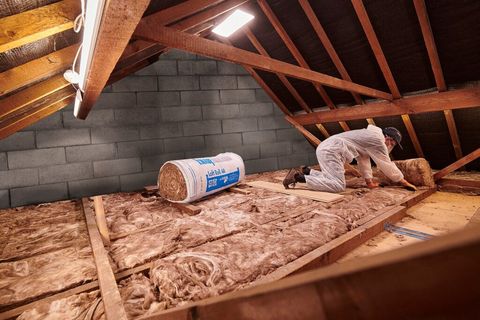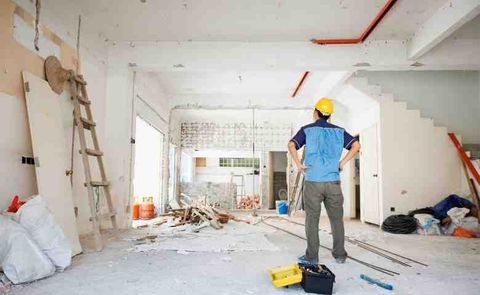Eco-Friendly Renovation Materials Explained: Facts, Details & Helpful Information for Modern Homes
Eco-friendly renovation materials are products designed to reduce environmental impact during home construction and improvement. They exist because conventional building materials often contribute to pollution, resource depletion, and high carbon output. Sustainable alternatives aim to minimize waste, improve indoor air quality, and encourage responsible use of natural resources.
These materials include bamboo flooring, low-VOC paints, recycled metals, reclaimed wood, energy-efficient insulation, and water-saving fixtures. As sustainability becomes more central to home design, renovators are searching for materials that are durable, long-lasting, and environmentally considerate.
Eco-friendly renovation is not limited to one area of the home. It applies to flooring, walls, roofing, lighting, plumbing, and outdoor landscaping. Homeowners can choose materials based on energy savings, recyclability, and production standards.

Importance
Eco-friendly renovation materials matter because they contribute to healthier homes and a cleaner environment. Their importance is visible in everyday living, long-term property value, and global climate conservation. These materials help by:
-
Reducing emissions and waste through recycled or low-impact production.
-
Improving indoor air quality by lowering chemicals and fumes.
-
Supporting long-term sustainability with durable alternatives.
-
Lowering environmental strain through reduced natural resource use.
-
Increasing energy efficiency which benefits homeowners and communities.
People most affected include homeowners, builders, architects, environmental organizations, and urban development planners. Eco-friendly materials solve problems such as high indoor pollution, inefficient heating and cooling, and excessive landfill waste.
Recent Updates
Recent years (2024–2025) have seen significant advancements in sustainable home renovation materials. Key trends include:
-
Low-VOC and zero-VOC coatings: More brands are producing paints, adhesives, and finishes that reduce harmful fumes indoors.
-
Recycled plastic insulation (2024): Many manufacturers now transform waste plastic into thermal insulation panels.
-
Rapid-renewable flooring materials (2025): Bamboo and cork flooring are gaining popularity due to fast growth cycles.
-
Solar-integrated roofing designs: Roofing materials now support built-in solar technology for better energy generation.
-
Biodegradable composites (2024): Research continues on plant-based materials for boards, tiles, and bricks.
Additionally, smart-home systems now help monitor energy consumption to evaluate renovation outcomes. Sustainable design has evolved from a niche concept into a practical standard for modern homes worldwide.
Laws or Policies
Regulations influence how environmental renovation materials are produced and used. Although policies differ by location, common frameworks include:
-
Green Building Certification Programs: LEED, BREEAM, and national eco-labels encourage sustainable material selection.
-
Government Energy Standards: Countries require insulation materials to meet specific energy-efficiency performance levels.
-
Indoor Air Quality Regulations: Some regions limit VOC emissions from paints, adhesives, and manufactured wood products.
-
Recycling and waste-reduction laws: Construction waste disposal is regulated to reduce landfill impact and increase reuse.
-
Renewable resource policies: Governments support renewable building resources through environmental incentives.
These policies encourage energy-efficient homes, reduce carbon footprints, and promote responsible renovation practices.
Tools and Resources
Helpful tools and platforms make eco-friendly renovation decisions easier. Common options include:
-
Home energy calculators to measure potential efficiency improvements.
-
Sustainable product databases listing certified green materials.
-
Interior air quality tracking apps for monitoring VOC levels indoors.
-
Building performance modeling software for heat, lighting, and airflow analysis.
-
Design libraries and renovation templates to help plan material usage.
Online education platforms, architectural forums, and environmental building organizations also provide research reports, courses, and design guides.
FAQs
What defines a material as eco-friendly?
A material is considered eco-friendly if it has low environmental impact during production, installation, usage, and disposal. This includes recycled, renewable, energy-efficient, or low-emission materials.
Are eco-friendly renovation materials durable?
Yes. Many sustainable materials such as bamboo, reclaimed wood, and metal insulation are designed for long life and strong performance in modern homes.
Can eco-friendly renovations improve indoor health?
Yes, products like low-VOC paints and natural flooring materials reduce harmful chemicals, improving indoor air quality for residents.
What areas of the home benefit most from sustainable materials?
Kitchens, bathrooms, flooring, insulation, and roofing are the most common renovation areas using eco-friendly products.
Do eco-friendly materials require special installation knowledge?
Some require standard installation, while others may need technicians trained in sustainable building techniques. Guides and manuals often provide setup instructions.
Conclusion
Eco-friendly renovation materials represent a growing shift in modern home design. They emphasize sustainability, resource awareness, and long-term environmental care. As new innovations emerge, more households can access healthier materials that reduce pollution and increase building efficiency.
From low-VOC finishes to recycled insulation and renewable timber, these materials support modern life without compromising natural systems. Staying informed about regulations, tools, and technological updates will help homeowners make smart renovation decisions for a sustainable future.





